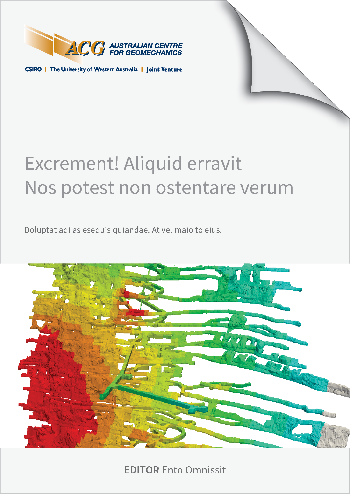Phyllosilicate dissolution and Si gelling in common leaching agents used in copper hydrometallurgy

|
Authors: Rosemann, M; Etschmann, B; Owen, ND; Brugger, J |
DOI https://doi.org/10.36487/ACG_repo/2435_R-03
Cite As:
Rosemann, M, Etschmann, B, Owen, ND & Brugger, J 2024, 'Phyllosilicate dissolution and Si gelling in common leaching agents used in copper hydrometallurgy', in Daniel Johansson & Håkan Schunnesson (eds), MassMin 2024: Proceedings of the International Conference & Exhibition on Mass Mining, Luleå University of Technology, Luleå, pp. 1543-1553, https://doi.org/10.36487/ACG_repo/2435_R-03
Abstract:
High-grade copper ores are becoming depleted, while globally increasing copper demand, in part led by the transition away from fossil fuels and towards renewable energy sources, is set to outpace Cu production in the near-term. Hydrometallurgical processing is becoming increasingly important to treat lower-grade and more complex copper ores where froth flotation is inefficient. Compared to leaching target metals from a finely ground ore, heap-leach processes are less energy intensive, and are thus more suitable for low-grade and complex ore types and pose a lower environmental impact. However, the abundance of gangue that is usually removed during fine-grinding and floatation often has a deleterious impact on metal recovery during heap-leaching. This study aims to understand highly reactive gangue mineral dissolution of chamosite-, phlogopite- and muscovite-rich mineral fractions using common acidic lixiviants used in Cu-sulfide leaching under varying pH conditions, including curing using concentrated acid. Chamosite leached the most rapidly, likely because of its interstitial octahedral layer containing di- and trivalent cations with corner-shared hydroxyl groups, which are connected to the more resistant tetrahedral layers via easily broken H-bonds. Dissolution of chamosite was fastest at pH 0. The dissolution rate of muscovite was the lowest at pH 2, likely due to reaching zero point of charge on its surface at these acid concentrations. Si-particles which formed in the leach solution were least stable at pH 0, leading to increased Si-polymerization. Curing did not limit silica dissolution, possibly due to the structural complexity of phyllosilicates, having anisotropic surface charge and Si-tetrahedron being not as easily accessed. This work emphasizes the importance of phyllosilicate gangue structure and leach kinetics in acid-leach environments. The presence and concentration of these mineral phases in an ore should be monitored and managed accordingly to limit dissolution and polymerization of Si-gels during the leaching of low-grade ores.
© Copyright 2025, Australian Centre for Geomechanics (ACG), The University of Western Australia. All rights reserved.
View copyright/legal information
Please direct any queries or error reports to repository-acg@uwa.edu.au
View copyright/legal information
Please direct any queries or error reports to repository-acg@uwa.edu.au